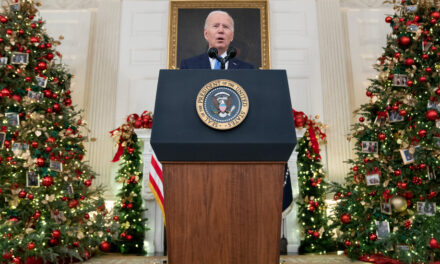
Many parents were thrilled to have funds land in their bank accounts last week, as the IRS distributed the first of six monthly child tax credit payments

(CNN)Many parents were thrilled to have hundreds of dollars suddenly land in their bank accounts last week, as the Internal Revenue Service distributed the first of six monthly child tax credit payments.
This is the first time the child tax credit is being paid out on a monthly basis. When lawmakers beefed up the credit as part of the Democrats’ $1.9 trillion coronavirus relief package in the spring, they opted to provide half of it this year to help parents with their monthly expenses, including housing, food, clothing and school supplies. Families will get the other half when they file their 2021 tax returns next year.
But receiving the monthly payments could lead to some unwelcome surprises at tax time in the spring, particularly for parents in certain situations. They may be better off opting out of this year’s income stream via an IRS portal and receiving the credit as a lump sum when they file their 2021 taxes, which is how it’s usually paid.
Unlike the three rounds of stimulus checks that many Americans received during the pandemic, the monthly deposits are actually early payments of families’ estimated child tax credits for 2021. But the payments are based on 2020 or 2019 income and household size.
So if either of those change, parents could wind up receiving much smaller refunds than they expected — or even owing taxes — when they complete their 2021 returns next spring. That’s when they have to reconcile the monthly payments they already received with the actual amount of child tax credit they qualify for.
Lawmakers, however, protected lower-income parents from potential overpayments. Heads of households making $50,000 or less and joint filers with incomes of $60,000 or less will not need to repay any excess credits.
Parents will also be able to update their incomes, number of dependents and marital status via the portal later this summer. The IRS should then adjust subsequent monthly payments.
Who qualifies?
The credit is based on parents’ modified adjusted gross income, the number of children they have and the ages of those kids.
The full enhanced credit will be available for heads of households earning $112,500 and joint filers making up to $150,000 a year, after which it begins to phase out.
For many families, the amount then plateaus at $2,000 per child and starts to phase out for single parents earning more than $200,000 or for married couples with incomes above $400,000.
More low-income parents will also become eligible for the child tax credit because the relief package makes it fully refundable.
Eligible households can receive a total of up to $3,600 for each child under 6 and up to $3,000 for each one age 6 to 17 for 2021.
Parents will receive half their credit — up to $300 a month for each younger child and up to $250 for each older one — on or about the 15th of each month through the rest of the year.
Earning more in 2021
Many families may make more this year than they did last year. The coronavirus pandemic sent the economy into a tailspin in 2020, costing many people their jobs or reducing their pay. But this year things are looking up as the country strives to return to normalcy.
“You could have had a mediocre 2020, as many millions of Americans did, but then in 2021 — especially with the rest of 2021 to go — with the economy picking up steam, you could move into a higher-income situation and really have a surprise come tax time,” said Mark Steber, chief tax information officer at Jackson Hewitt Tax Service.
Take a married couple with two kids, ages 4 and 10, for instance. If their adjusted gross income is $140,000 for 2021, they qualify for the full enhanced child tax credit of $6,600. They will receive advance payments of $550 a month (a total of $3,300 in 2021) and the other $3,300 when they file their taxes, Steber said.
But if the parents get higher-paying jobs or bonuses this year that boost their income to $200,000, they are eligible only for a $4,000 credit. If they receive $550 a month this year, they’ll get only a $700 credit on their 2021 tax return, he said.
Divorced couples with joint custody
Some divorced couples with joint custody switch who claims their kids on their tax returns each year. So that means the parent who included the children on his or her 2020 return may not be doing so for 2021, said Trenda Hackett, executive editor at Thomson Reuters Tax and Accounting and a former IRS revenue agent.
If that parent gets the monthly deposits this year but isn’t claiming the kids, he or she will have to reconcile that overpayment at tax time next year.
Other parents may not need the funds on a monthly basis and would prefer to receive large refunds so they can make major purchases next year. These families may also want to opt out, Hackett said.
“If you aren’t that saver, let the IRS be your savings account,” she said. “I say that a lot.”
Source: http://rss.cnn.com/~r/rss/cnn_topstories/~3/hARV__VokR8/index.html

















